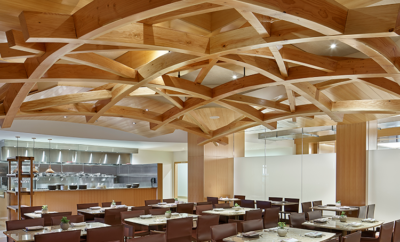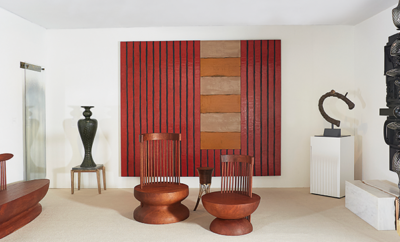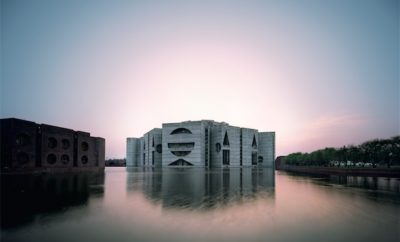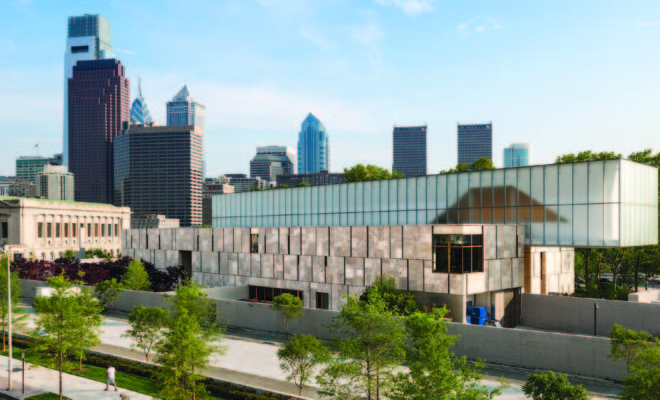 © BARNES FOUNDATION 2012
© BARNES FOUNDATION 2012
Feature
The New Philadelphia Story: Culture and Collaboration
PHILADELPHIA HAS A LONG HISTORY of fine craftsmanship and venerable arts institutions. It is a city (and region) that historically has been home to some of America’s foremost studio furniture designers and architects. It is a determinedly historic city with a strong architectural preservation sensibility and is so enmeshed in its centuries of heritage that when Philadelphians say “pre-war” they mean not a twentieth-century conflict but the Revolutionary War.
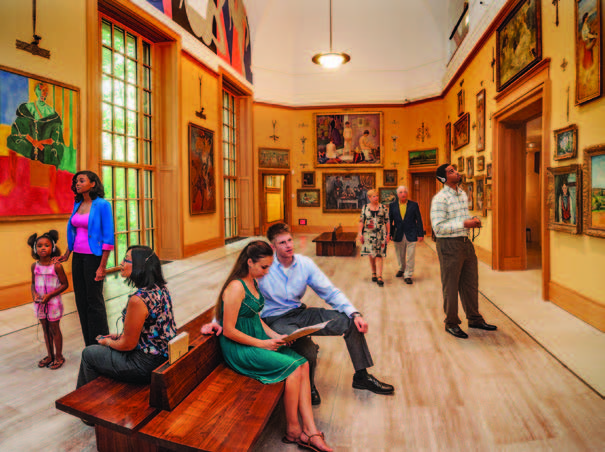
One of the galleries inside the Barnes Foundation’s new building. R. KENNEDY PHOTO FOR GPTMC
Against this powerful historic backdrop, Philadelphia has emerged as a vibrant center for contemporary design, craft, architecture, and art. In part because of the city’s many art and design-oriented colleges and universities, Philadelphia has a wealth of local talent, enriched by what statisticians are noting as a surge of inmigration of younger residents, drawn by the city’s location and affordability. “Much of the growth that I have seen comes from the energy and enthusiasm of a young population that has moved into Philadelphia’s neighborhoods, infusing them with new creative ideas and ‘can do’ attitudes,” says independent curator Eileen Tognini, a lifelong Philadelphian. “Like-minded communities seem to grow quickly and with an infectious pace”—new businesses, art collectives, design studios, co-op work spaces, and other maker and “doer environments.”
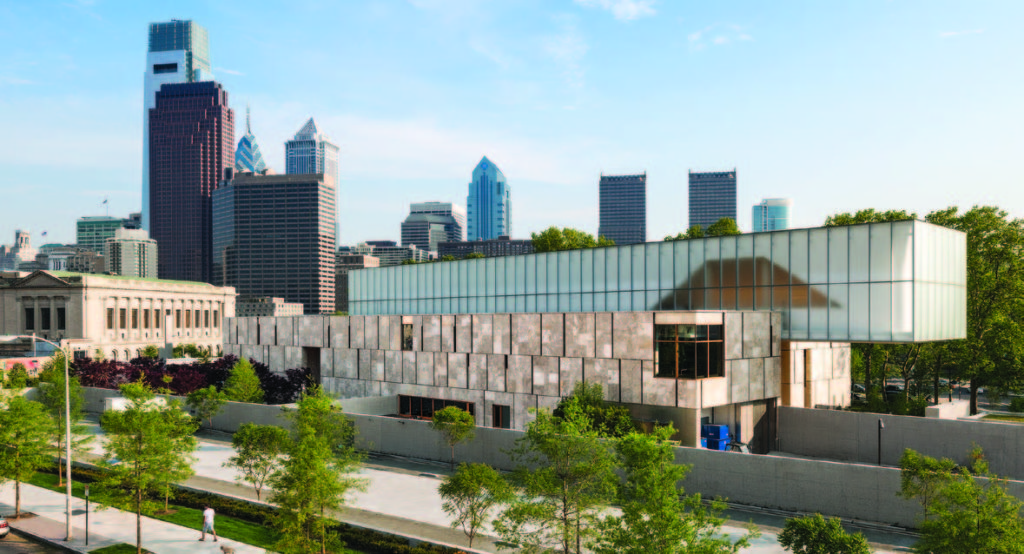
The new Barnes Foundation building on Benjamin Franklin Parkway, designed by Tod Williams and Billie Tsien, opened in 2012. © BARNES FOUNDATION 2012
There is, of course, a well-entrenched cultural community. The city is hard at work on a series of what architect, author, and design critic Lisa Roberts calls “rich urban design initiatives,” among them, a linear park connecting Center City to the Philadelphia Museum of Art, as well as a new large-scale civic space in front of City Hall, Dilworth Park, being designed by nationally prominent Philadelphia firms Kieran Timberlake and Olin. It is a telling sign that the City of Philadelphia has a department called “Arts, Culture, and the Creative Economy.”
The city has long been home to some of the country’s most distinguished design galleries—among them Moderne, Wexler, Snyderman-Works, and Calderwood—which have both promoted and prospered from the region’s rich legacy of design and craft. A lively food scene drawing on regional Pennsylvania and Mid-Atlantic specialties is buoyed by the innovative design work from some of the city’s up-and-coming architectural and landscape firms.
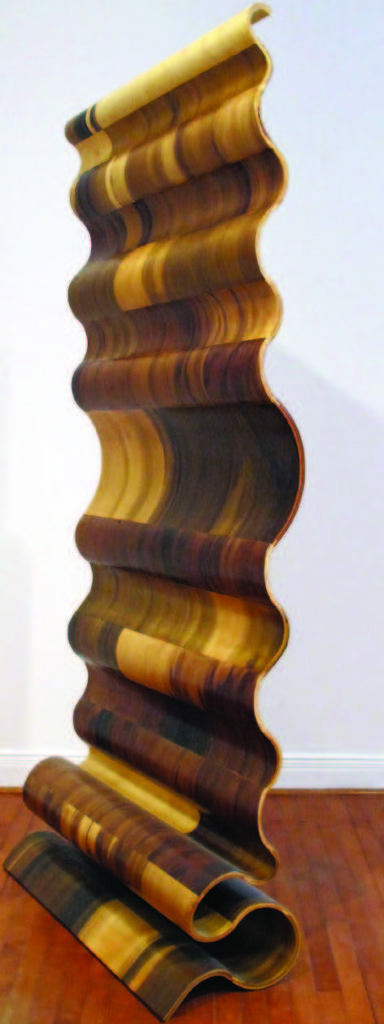
Vertical Wave by Susan Woods, known as Aswoon, 2014, in bent poplar plywood is on view at Wexler Gallery. WEXLER GALLERY
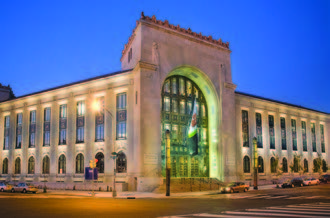
.
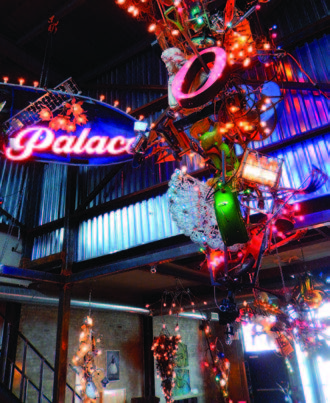
Top: G. WIDMAN PHOTO FOR GPTMC. Bottom: BAHDEEBADHU
And there are hidden treasures. Philadelphia’s numerous buildings once devoted to industry and manufacturing offer opportunities for adaptive re-use, and the opportunities are being scooped up. Notes Adam Kamens, a glassblower and manufacturer turned custom crafter turned gallery owner: “For a large city, Philadelphia still feels small. There are still many great untapped businesses and resources dotted around the city. In our neighborhood alone we have nearly three hundred manufacturers within one square mile. This affords us the ability to design and experiment with techniques and materials outside our core expertise. In addition, we have access to incredible materials and age-old practices as a result of our proximity to the Amish and the Mennonite communities that are both amazing craftsmen and excited to take on new challenges.”
The annual fall event called DesignPhiladelphia is a cornerstone here, helping not only to celebrate what the festival’s founding director Hilary Jay calls the “huge abundance of talent” in the city but also to build a sense of community around it. DesignPhiladelphia observes its tenth anniversary from October 9 to 17 with a schedule of workshops, demonstrations, exhibitions, tours, lectures, and symposiums. “The range is huge,” Jay says. Even Shake Shack sponsors an annual design competition; last year’s for a bike rack was won by an eco-friendly “bike corral” from Philly-based Shift_Design.
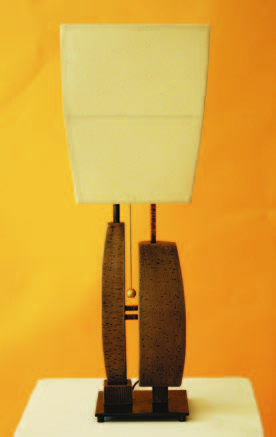
Charte, 2012, is among the works by Gary Magakis at Snyderman-Works Galleries. DESIGN DESTINATION
SNYDERMAN-WORKS GALLERIES
A particular focus of DesignPhiladelphia is collaboration, with designers and makers working with each other and with an interested public. For example, AIGA (American Institute of Graphic Arts) is sponsoring a hands-on workshop with the Hamilton Wood Type and Printing Museum (as old-school as you could get) and NextFab, a shared space for high tech design work, with the idea of melding the oldest and newest techniques and technologies. “The bottom line,” Jay says, “is that we are helping people understand how design touches each and every aspect of their lives every day.”
DesignPhiladelphia had its roots in academia, but it is now the signature event of the Philadelphia Center for Architecture. The two organizations have also become a nexus for year-round architectural events—hosted by the Center for Architecture or others, among them Hidden City Philadelphia, which produces a daily blog and offers its own widely attended guided tours.
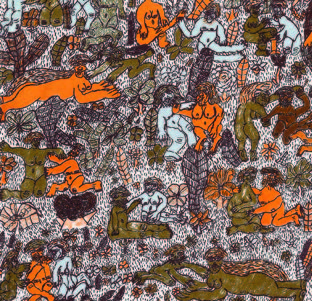
Robert Venturi and Denise Scott Brown and Associates’ Grandmother (1983). FABRIC WORKSHOP AND MUSEUM
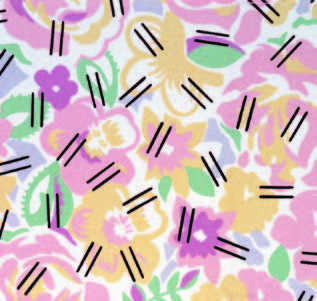
Will Stokes Jr.’s People (1979). FABRIC WORKSHOP AND MUSEUM
The Philadelphia Museum of Art with its strong design department headed by curator Kathryn B. Hiesinger and its extensive (and growing) craft collection led by associate curator Elisabeth Agro, is another touchstone for the city’s cultural offerings. The third-largest art museum in the United States, PMA’s 227,000-plus works of art are spread throughout the original building (opened in 1928) and the 1927 art deco Ruth and Raymond G. Perelman Building (acquired by the museum in 1999), which showcases the collections of modern and contemporary design; photography, prints, and drawings; and costumes and textiles. In October a landmark exhibition of photographs by Paul Strand opens, followed in November by a retrospective exhibition honoring the Swiss design firm Vitra. The museum recently announced a major expansion project by the Los Angeles-based Frank Gehry.
Museums flank the broad landscaped Benjamin Franklin Parkway, including the Pennsylvania Academy of the Fine Arts and the Rodin Museum, and now the Barnes Foundation in its new home designed by Tod Williams and Billie Tsien. The long, bitter controversy about moving the museum from its original Paul Cret building in suburban Merion, though not forgotten, has paled in the face of the Barnes’s remarkable stone, concrete, and glass building that encases galleries designed with the exact proportions of the originals.
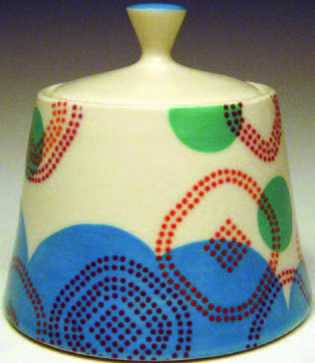
CLAY STUDIO
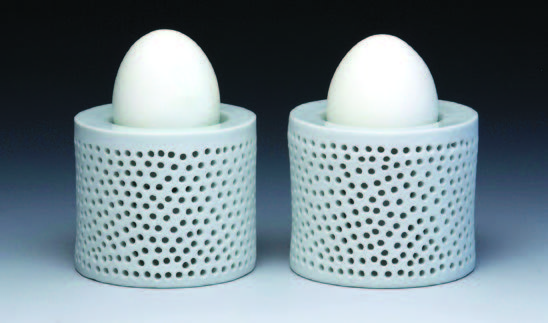
Bryan Hopkins chose his Egg Holders and Meredith Host’s Dot Dot Rounded Jelly Jar, both 2014, for the exhibition Breakfast: Curated by Bryan Hopkins at the Clay Studio from November 7 to 30. CLAY STUDIO
Intriguingly and unique to the city, Philadelphia’s major cultural landmarks are joined by a series of smaller museums, each devoted to a more single-minded vision. The Fabric Workshop and Museum, founded in 1977 by Marion Boulton Stroud, affords textile artists, fine artists, photographers, designers, architects, and others opportunities to work with fabric. Such luminaries as Louise Nevelson, Claes Oldenberg, Roy Lichtenstein, Red Grooms, Ed Ruscha, and Robert Venturi and Denise Scott Brown have spent time there along with numerous younger artists and designers, among them Doug Aitken, Daniel Arsham, and Tacita Dean. The Fabric Workshop and Museum fills a Center City building (with a store on ground level) and spills over into a second storefront, thus accommodating several simultaneous exhibitions at once—some of them under the auspices of another museum venture, the New Temporary Contemporary. A major highlight of the fall season, running through November 9, is Venturi, Scott Brown and Grandmother: Patterns for Production, which focuses on the firm’s use of pattern and color particularly in furniture, textiles, and objects designed during the 1970s and into the early 1990s.
The Center for Art in Wood announces itself with a remarkable wall mural depicting dozens of wooden sculptures. (The mural, by artist Benjamin Volta, was created under the city’s prolific Mural Arts Program.) Begun as the Wood Turning Center and nourished for almost three decades by Albert LeCoff, it is the repository of a mind-boggling collection of turned wood objects and hosts exhibitions on its ground floor. A major retrospective, Rediscovering Emil Milan and His Circle of Influence, will open November 7. Nearby, the forty-year-old Clay Studio mounts exhibitions, provides workspace, and offers an outlet for ceramists to sell their wares, along with programs that explore the ceramist’s art and craft. Opening in November is an exhibition entitled Breakfast: Curated by Bryan Hopkins, which will look at artistic variations on such otherwise everyday objects as a toast rack or an egg holder.
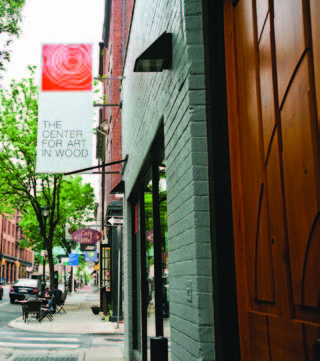
The Center for Art in Wood is located on North Third Street. Its exhibition allTURNnatives: Form and Spirit is on view until October 25.
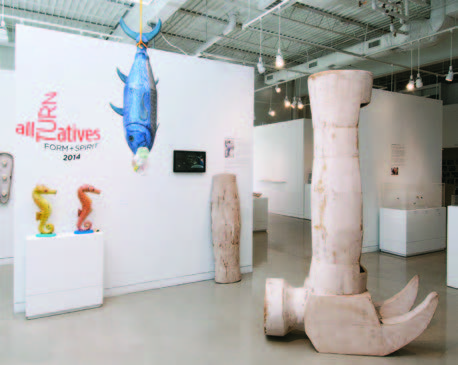
CENTER FOR ART IN WOOD (2)
The thirty-year-old Moderne Gallery, founded and led by Robert Aibel, has throughout its history been the most important dealer of the work of George Nakashima and his daughter, Mira. The gallery, which fills five floors of a historic building, also represents the work of other significant studio furniture designers such as Wendell Castle, Wharton Esherick, Sam Maloof, and David Ebner. This fall, Aibel will mount a companion Emil Milan exhibition to the one at the Center for Art in Wood.
The North Third Street corridor in Old City is also home to Wexler Gallery, which focuses on contem- porary work and features both design and craft and represents an array of up-and-coming artists and designers, among them Vivian Beer, Gregory Nangle, and Brian Gladwell. This fall’s exhibition is Flux: Four Artists Redefining Glass. Just off Third Street is Snyderman-Works Galleries, which concentrates on ceramics, glass, jewelry, fiber, and wood. Begun in 1965 by Ruth Snyderman, who still runs it with her husband Rick, it has hosted numerous landmark exhibitions of design, furniture, and craft over the years.
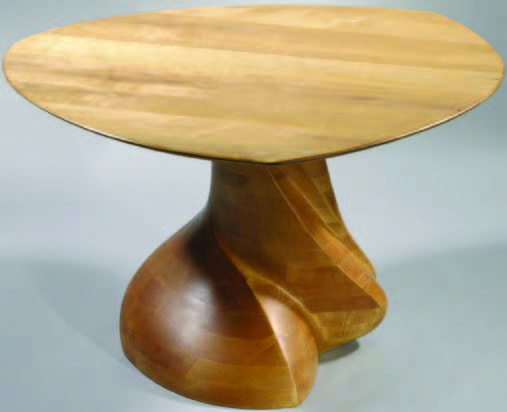
This dining table by Wendell Castle in stack laminated cherry, 1976, is at Moderne Gallery. MODERNE GALLERY
The energy and excitement of Philadelphia’s design scene can also be found in the urban neighborhoods to the south and north. Among the prime, if offbeat, design highlights in what has long been called South Philly is the elaborate mosaic-clad Magic Gardens, the work of folk artist Isaiah Zagar; it is an immersive environment and, with education and outreach programs, has emerged as a cultural institution in its own right.
Both of the city’s rivers (the Schuylkill and the Delaware) are now being tapped for their potential as generators of civic and public life, but it is the northern neighborhoods that border the Delaware— among them the Northern Liberties, Olde Kensington, and Fishtown—that have become magnets for creative ventures. There, one can find manufacturing buildings being converted into arts facilities, offices, work spaces, coffee shops, and much more. The sculptor Warren Muller works in an industrial space in Kensington making installations and lighting fixtures out of scrap metal and large-scale found objects. Bahdeebadhu, his studio (in conjunction with the interior designer R. J. Thornburg), is open by appointment.
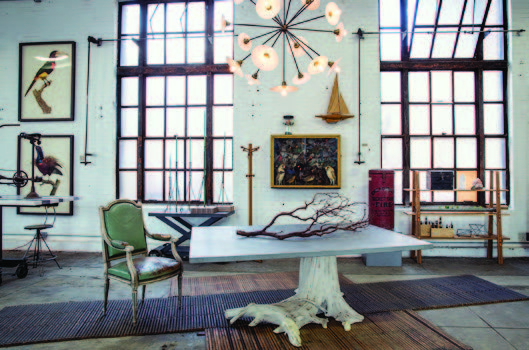
American Street Showroom offers work by Amuneal, Groundwork, and Robert True Ogden in a 1921 electric company substation. AMERICAN STREET SHOWROOM
Adam Kamens, who opened a glass-blowing studio called Hot Soup in 1996, took over his family’s magnetic metal shield business, Amuneal, in 1993 and transformed it into a sought-after manufacturer of store installations, then segued further into designing limited edition furniture. Amuneal (both Adam and his wife, Kim Kamens) joined with three other designers—Brian Foster and Ernie Sesskin of Groundwork and Robert True Ogden—to open American Street Showroom (also appointment-only) in a 1921 electric company substation in the Kensington neighborhood, where work by all three sets of designers is on view. Says Kamens: “American Street Showroom is a great example of finding a romantic space that no one else wanted, buying it without a real plan (because in Philadelphia you can still do that), two years later deciding to open a showroom…ten minutes later calling friends with their own businesses, with overlapping customers and suppliers, and asking them if they want to be part of the showroom and three months later opening a showroom based on collaboration and a belief that creativity drives commerce.”
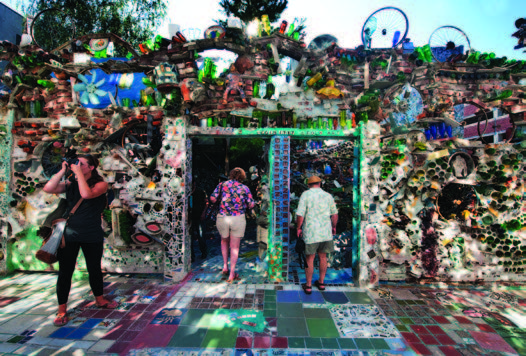
The mosaic Magic Gardens in Philadelphia’s South Street neighborhood was begun by Isaiah Zagar in 1994 and is open to the public. MAGIC GARDENS/R. KENNEDY PHOTO
In short, the desire for innovation and spirit extends into any number of Philadelphia’s urban neighborhoods, drawing in, as curator Tognini puts it, “risk takers willing to start something from nothing…and there is appetite for it all. It is a supportive community….While I can’t imagine anything different, I am reminded particularly by my New York artists about how much they admire our creative community for its support of its own members. I love that there is more out there than I even know about— funny, since the creative community was so small at one time, and not that long ago.”


